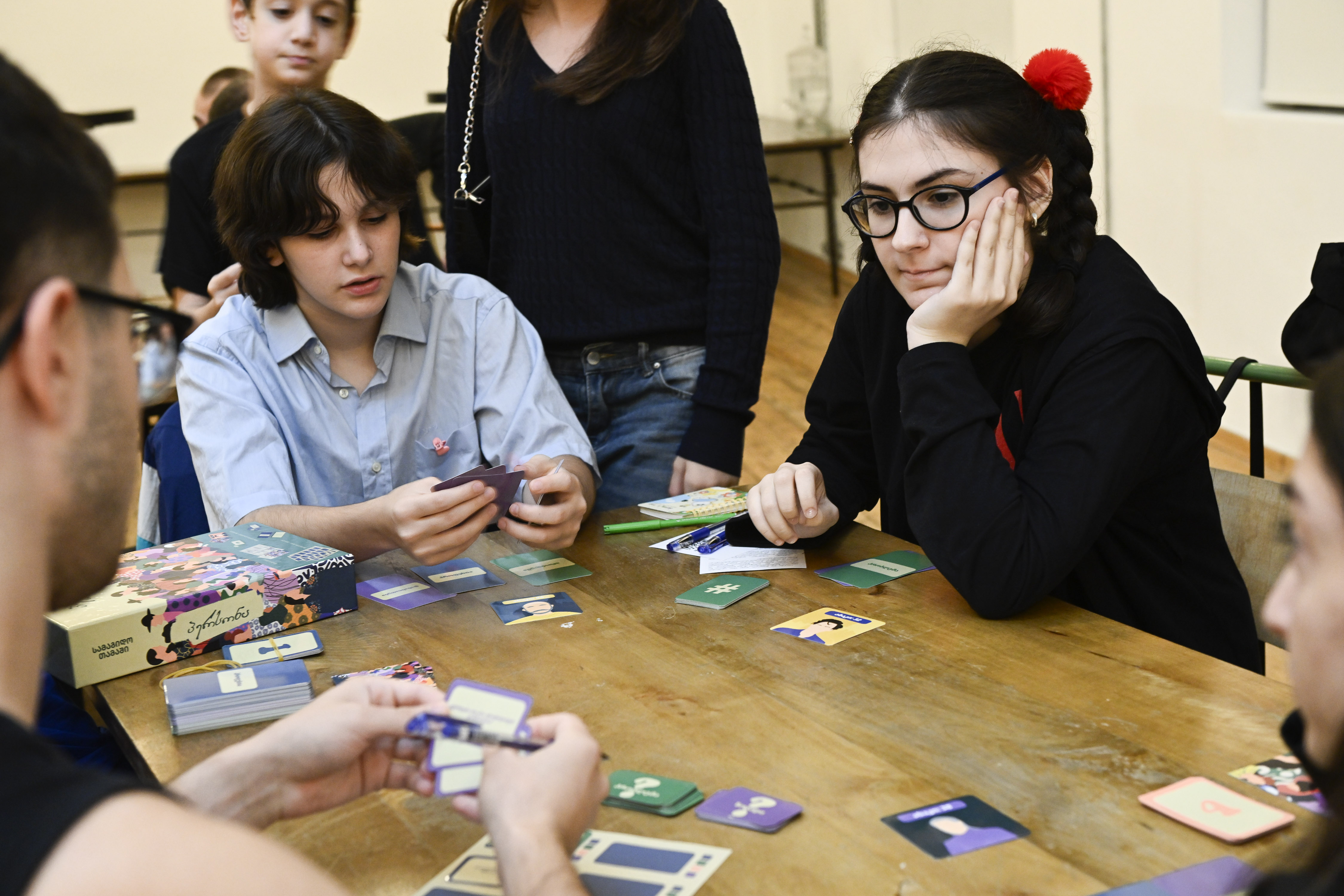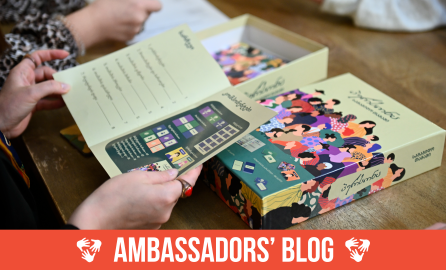Fostering change through creative solutions
A few years ago, I came across an intriguing TED Talk featuring Sir Ken Robinson, a renowned author on creativity. Robinson argued that creativity is the base of every form of human development, stating that “it is as important as literacy and should be treated as such.”
Consider this: if literacy is fundamental for understanding a complex issue, why shouldn't creativity be equally valued in this regard? Creativity and innovation have countless potential to support solutions to the most pressing issues we face today. They can help transform people’s beliefs and attitudes and, thus, build a more harmonious society.
Through evidence and programming, we see that effectively implementing gender transformative strategies entails challenging existing gender-biased norms and stereotypes. This is not an easy process; thus, finding new ways, space, and time to challenge them is crucial to effectively reach communities, youth, and adults and starting a critical discussion on the role of stereotypes.
It is a much-needed strategy, as gender attitudes and norms in Georgia, for example, are still deeply rooted in inequality. Data shows that 68% of men and 34% of women in Georgia believe that men have the last say in the family; at the same time, up to 60% of men and 38% of women in Georgia think that women's main duty is to take care of the family rather than seek a professional career.1
Evidence demonstrates that gender norms are changing faster among younger generations:2 therefore, using effective interventions to work with adolescents and young people is crucial to contribute to shifting gender-biased norms and stereotypes at an early age and through the process of socialisation.

With the support of the EU, the United Nations Population Fund (UNFPA) in Georgia works hand-in-hand with partners, including from the private sector, to use innovative tools to reach adolescents and young people, and one such way is using the power of literature and the art of play. UNFPA seized the opportunity of the growing popularity of the literature genre – comics and also a form of entertainment - board games among adolescents and youth in Georgia and created specific tools - a board game called Person and a comic book titled Invisible to challenge gender stereotypes.
Both tools are informal ways to try things and explore, push boundaries, challenge norms, develop imagination and creativity, but also come up with conclusions and reevaluate our own beliefs. Through reading and playing, youth and adults can get to know themselves, the others, and the world around them. Comics and games serve as educational tools, helping children and adults alike to develop critical thinking skills and empathy. For instance, when board games challenge gender stereotypes, they promote a broader understanding of gender diversity and equality. This interaction extends beyond the game board and can positively impact real-life attitudes and behaviours. The same can be applied to Comic books, as the storyline and visual imagery can trigger critical discussion among the readers.

Since their launch, both tools have attracted young adults and are widely disseminated through schools, youth centres, and civil society organizations as conversation starters and discussion methods. Nowadays, up to 45 community and youth organisations in Georgia (across five regions) are using UNFPA’s board game in their programming on youth and gender.
A creative approach to project implementation: tips and general considerations
For practitioners interested in applying innovative approaches to trigger social norms change, the following tips may come in handy:
-
Make sure that the tools you have identified are age-appropriate and context-sensitive: while working on communication products, for example, ensure that content (language, message, etc.) is aligned with the age group you are working with. Additionally, consider cultural cues and the specificities of the environment to avoid misconceptions.
-
Test the tools: ensure that tools are pre-tested with the intended audience. One way to do that is through focus groups, which can provide valuable feedback and insights into the development process.
-
Know your audience: feel the pulse of the group that you are working with. If your primary focus is on young people, think of how they are communicating and what channels they are using to trigger their interest and behaviour. This ensures higher levels of engagement.
-
Observe change: if possible, establish baselines and targets to make sure that the used approach is fostering change. In development work, measuring social change is hard to capture, thus, careful planning is essential.
-
Think about the tools' sustainability: if the developed tools are, for instance, widely accessible through schools, youth centres, communities, and youth organisations, you will have a higher chance of them being consistently used in the future and that your target audience will develop higher levels of ownership.
-
Engage partners: think of potential partners who can help with the elaboration and dissemination of the tools to maximise the impact. In this regard, the comic book and the board game capitalised on a private partnership, such as one of the largest publishing houses in Georgia, Palitra L. This partnership ensured printing and wider dissemination of the tools, including through bookstores and national book festivals, where youth are often engaged.
Conclusion
In conclusion, while traditional ways of communicating a certain message can be useful, in the rapidly changing world, we need more innovative and creative ways to spark an open discussion around the most critical issues. Using innovative approaches to trigger change in social norms and attitudes that place women and girls in disadvantaged positions can be a powerful strategy.
Social norm change among youth takes a long time and requires continued investments and efforts across various domains of human interaction, be it family settings, schools, peer groups, or beyond. At the initial stage, opening up a discussion on the issue in question and asking critical questions is essential, and this is where innovative and creative communication tools can be mainstreamed. Using literature and games to engage youth in discussion on gender equality demonstrates alternative approaches towards a long-lasting process of social norm transformation.
-
Photo credit: Gela Bedianashvili/UNFPA.
1. Men, Women and Gender Relations, UNFPA, UNDP (2020).
2. Ibid.


Log in with your EU Login account to post or comment on the platform.